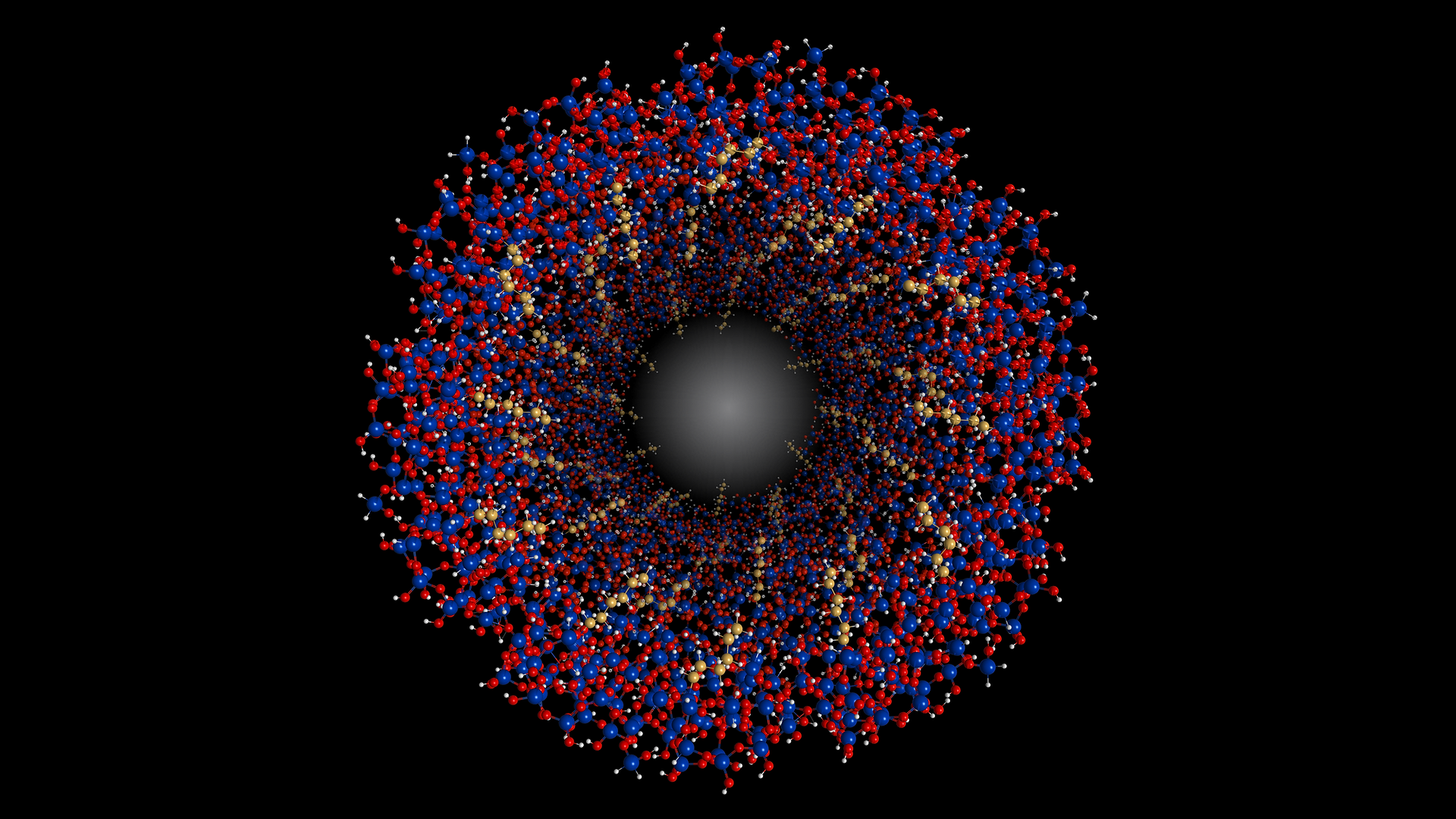


Welcome to
The Slowing Group
at Iowa State University
and the Ames Laboratory

Developing multitasking nanodevices to solve chemical, biological and environmental problems
The synthetic capabilities and fundamental understanding obtained in the preceding research areas enable the design of complex nanodevices capable of performing multiple tasks. These nanostructured materials can be co-assembled with components as diverse as biomolecules (enzymes, DNA, etc.), organocatalysts, and plasmonic nanoparticles to produce a wide range of functionalities. Ultimately, these hybrid nanodevices can be used to address practical problems in several different areas.
Of particular advantage is the synthetic capacity of introducing multiple functional groups into single nanoparticles. Developing methods to control relative locations of multiple functionalities is key to synthesize advanced materials capable of displaying sophisticated behaviors like cooperativity between neighboring groups (31, 37, 46, 50) or co-localization of mutually incompatible species within the same material.(35) Some of the multifunctionalized nanostructured materials we have assembled include multicatalytic systems that lead reactants through tandem processes behaving like nanosized assembly lines,(35, 39) or nanorefining units that selectively isolate and convert target substances from complex feedstocks like crude microalgal oil into renewable fuels.(37)
Applications of our nanostructured materials in conversion of biorenewables are shown below.
(1) Selective capture and conversion of fatty acids from microalgae
Microalgae oil is a promising renewable feedstock for producing fuels and chemicals. However, its complex composition presents an important challenge because some of its components (like fatty acids) may interfere with the base-catalyzed conversion of its glycerides into biodiesel. We have shown that amine-modified mesoporous silicas can selectively remove the fatty acids from microalgal oil, making it suitable for conversion into biodiesel.(28) Furthermore, we have demonstrated that combining the amine groups with catalytic Ni nanoparticles within the same material provides a system that allows sequestering the fatty acids and hydrogenating them directly into diesel range hydrocarbons (aka green diesel).(37) This integrated nanorefinery system is a good example of how nanoscience can turn challenges into great opportunities.
Kapil Kandel Conerd Frederikson
(2) A non-noble-metal toolbox for the selective conversion of fatty acids into fuels and commodity chemicals
The catalytic hydrogenation of fatty acids commonly found in plant, algae or waste oils is an attractive option to produce renewable fuels and commodity chemicals. The scheme below illustrates the possible reaction pathways and products that can be formed during the hydrotreatment of fatty acids. Based on this scheme, one can see that the key challenge in the process is attaining a high selectivity for a particular product of interest. Of course it is also desirable to achieve the highest possible conversion under the mildest reaction conditions. Conventional catalysts for this processes are noble and sulfided metals, with the inconvenience of high cost of the former and potentiall S-contamination by the latter. Our research has provided a family of catalysts based on inexpensive earth-abundant metals formed as nanoparticles within the pores of mesoporous silica that are highly active and selective for each of the products in the scheme. The design of these catalysts is based on producing binding and activating sites for each of the reactants involved in the process: the fatty acid (on amines or defective metal oxide surface sites) and the H2 (on preexistent or in situ generated metallic sites). Our catalyst toolbox includes Ni for hydrocracking (37), amine and Ni for hydrodecarbonylations (37), Fe/Fe-oxides for hydrodeoxygenations,(38) and Cu/Fe-oxides for conversion into fatty alcohols,(46) all of these components are supported within the pores of mesoporous silicas. The differences in selectivities of the catalysts are related to acid/base properties, changes in reducibility, synergistic interactions, and possibly steric crowding of reactants within the nanometer wide pores of the silica supports.




Collaborators:
Y.-J. Lee (group)
B.G. Trewyn (group)
Principal Investigator: Igor Slowing
Principal Investigator: Igor Slowing





Collaborators:
Y.-J. Lee (group)
Kapil Kandel Conerd Frederickson Umesh Chaudhary Nicholas Nelson
(3) Rare-earth based catalysts for dearomatization of lignin models
Dearomatization of phenol is a viable approach to produce cyclohexanone, cyclohexanol or a mixture of both industrially known as K:A oil. This product is a key precursor in the synthesis of nylon. Since phenol and phenolic compounds are ubiquitous components of biorenewable feedstocks such as lignin, developing mild and selective processes of dearomatizing phenol is a great opportunity for producing renewable polymers and related commodity chemicals. Phenol dearomatization is usually conducted using Pd on alumina, zeolites or carbon at temperatures around 140 - 180 C and H2 pressures going from 1 to 15 bar. We observed that because of the dissociative binding of phenol on vacancy sites of high surface redox active CeO2 and the strong interactions between Pd and CeO2, Pd/CeO2 is a remarkable catalyst for conducting this conversion. Our experiments showed that in contrast to the relatively harsh reaction conditions described above, the conversion could take place with high yields at room temperature and atmospheric H2 pressure.(43) This result opens another opportunity to produce renewable chemicals in an energy-efficient fashion.



Collaborators:
Aaron Sadow (group)
Steven Overbury (group)
Nicholas Nelson Sebastián Manzano